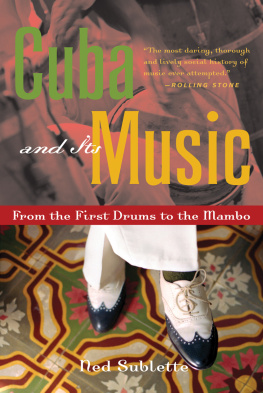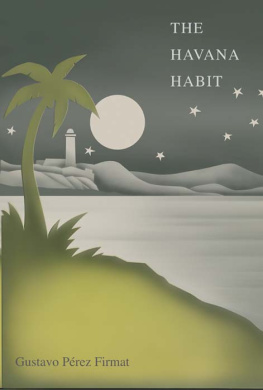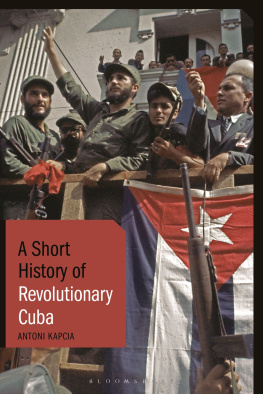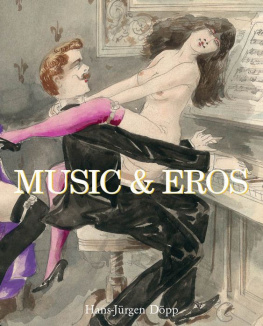
Library of Congress Cataloging-in-Publication Data
Sublette, Ned, 1951
Cuba and its Music: from the first drums to the mambo / Ned
Sublette.1st ed.
p. cm.
This is the first of two volumesPref.
Includes bibliographical references (p. 615) and index.
ISBN 1-55652-516-8 (cloth)
ISBN-10: 1-55652-632-6 (paper)
ISBN-13: 978-1-55652-632-9 (paper)
1. MusicCubaHistory and criticism. I. Title.
ML207.C8S83 2004
780.97291dc22
2003022097
Cover design: Joan Sommers Design
Interior design: Hendrickson Creative Communications
Cover photos: Top: Playing Bongos, Cuba; Adalberto Rios
Lanz/Sexto Sol. Photo courtesy of Getty Images. Bottom:
Ricardo Can, Matanzas, 2000. Photo by Ned Sublette.
Photos by Ned Sublette: pp. xi, 118, 172, 215, 217, 218, 242, 337, 340, 357, 360, 371. Photos courtesy of CIDMUC, Havana: pp. 92, 341.
Photos courtesy of Ministry of Culture, Havana: pp. 244, 249, 254, 301, 304, 305, 308, 336, 352, 355, 356, 364, 368, 382, 385, 388, 397, 401, 407, 427, 437, 441, 443, 450, 453, 456, 457, 458, 470, 486, 489, 494, 496, 510, 564.
All other images courtesy of Ned Sublette.
2004 Ned Sublette
All rights reserved
Published by Chicago Review Press, Incorporated
814 North Franklin Street
Chicago, Illinois 60610
ISBN-13: 978-1-55652-632-9
ISBN-10: 1-55652-632-6
Printed in the United States of America
5 4 3 2 1
Mientras ms honda la herida
Es mi canto ms hermoso.
The deeper the wound
The sweeter my song.
Jos Mart
Contents
Preface
The Cubans, we came here and changed your American music from the bottom up! And nobody knows this! He is shouting. NOBODY WRITES ABOUT THIS!
Robert Palmer, quoting Mario Bauz
This is a history of music from a Cuban point of view.
We in the United States can never completely understand our own music without reference to Cuban music. By the time the Pilgrims made their voyage, the fingerprints of the Spanish-speaking New World had already appeared on the music of Europe, via the port of Havana. As music in English-speaking America developed, Cuban music was already there, informing it. Needless to say, you can hear the influence of the United States on Cuban music. But traditions that came out of Cuba lurk behind everyday musical concepts in the United States, passing almost unnoticed because of their familiarity and longstanding presence. By the end of the nineteenth century they were well embedded, and this influence was reinjected into every generation in the United States right up through the Cuban Revolution in 1959 and after.
A point that I will make in various ways in this book and the volume that follows is that, in the United States, Cuban music has to be regarded as the Other Great Tradition, a fundamental music of the New World. You can hear its influence in classical music, ragtime, tango, jazz, rhythm and blues, country, rock and roll, funk, and hiphop, to say nothing of salsa. The imprint of Cuban music is everywhere, and Cuba is still a world power in music today. To speak of Cuba is not to deny the music of the rest of the Caribbean, which flowed in and out of Cuba, nor to deprecate music from other places. But Cuba was of such central importance in the history of the New World and its music that a book about Cuban music must cover a great deal of ground.
Popular music history written in the second half of the twentieth century typically described American music in terms of black and white, but mostly failed to see the elephant in the living room: Cuba. Certainly the drama of race is central to the formation of arts and culture in the United States. But that alone does not explain why our music sounds the way it does. Another factor must be taken into account, one that is not innocent of racial issues but which also involves the language barrier. White and black people in the United States speak the same languageup to a point, anyway. But Spanish speakers in the United States have always been the other.
The history of Cuban music and its effect on American music has been largely unrecognized in the United States, perhaps for the simple reason that it was sung in Spanish. Cuban music was imported into the United States over and over again as a novelty, with campy costumes and horrendous stereotypes. Meanwhile, its profound impact on generation after generation of American musicians passed almost unnoticed. The problem was exacerbated after 1959, when Cuba became a sort of black hole in the minds of most Americans.
Theres a lot of ground to cover. In choosing how to begin my tale, I imagined trying to talk about rock and roll with someone who didnt speak English and had no knowledge of U.S. history and culturesomeone who had never heard of JFK, MLK, the Vietnam War, civil rights, hippies, beatniks, the McCarthy era, World War II, the Depression, border radio, the Jazz Age, or minstrel shows. Someone who had no idea that there had been slavery, a Civil War, Reconstruction, segregation, or the Holiness Church; who didnt know about the special character of New Orleans or the Mississippi Delta; who didnt know what the blues was, or the First Amendment, or that we won our independence from Britain in a revolutionary war that began in 1776.
Thats basically the situation most Americans find themselves in when it comes to Cuba. Cubans know what happened on the tenth of October (see chapter ); Americans dont. And no Cuban would tell you it doesnt matter. We dont study history, geography, or languages much in the United States. This book will inevitably contain a good deal of nonmusical history, because music, far from being a universal language, is made in the spaces created by society and empire, and we have to know what those societies and empires were if we want to understand the music. Just as a history of Europe viewed from Spain offers a different vision than one viewed from England, so a history of the New World viewed from Cuba offers a different vision than one viewed from the United States. This is so because Cubas African and European Old World ancestry is quite distinct from the African and European antecedents of its much larger neighbor to the north, and also, of course, because of the political divide between our two countries, which after 1959 led us in drastically different directions.
Music is so essential to the Cuban character that you cant disentangle it from the history of the nation. The history of Cuban music is one of cultural collisions, of voluntary and forced migrations, of religions and revolutions.

People often ask me how I got interested in Cuban music. The short answer is, I have good taste. The longer answer goes something like this:
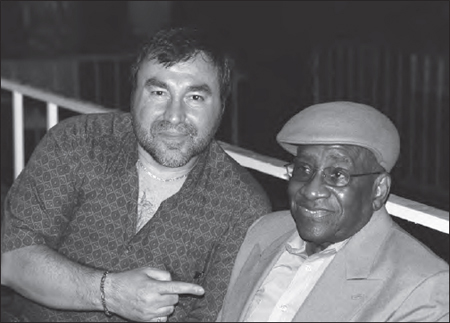
Harry Spulveda and Mongo Santamara at Lincoln Center, July 2000.
Im a musician, and Ive always perceived the world through my ears. Born in Lubbock, Texas, in 1951, I grew up in Louisiana, Texas, and New Mexico. I began learning Spanish as a child because I liked it. As a teenager I played the popular music of the 1960severything from three-chord rock and roll to country to bossa nova. I learned classical guitar from a Cuban professor in the bilingual town of Albuquerque in the late 1960s and early 1970s, studied guitar and sixteenth-century vihuela music in Spain with my teachers teacher, and after a few detours made my way to New York City, where I played a lot of different kinds of music.
Next page
